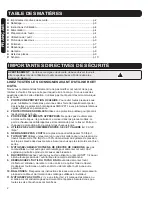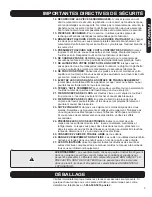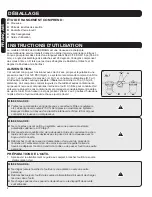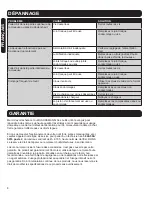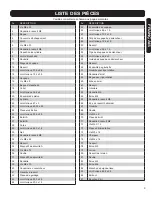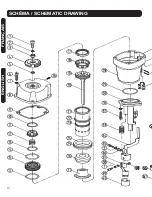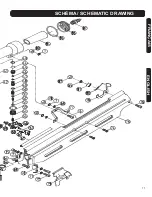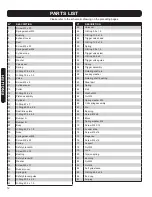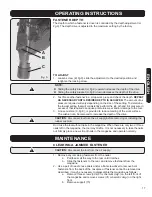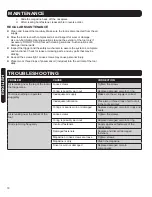
13
ENGLISH
!
TABLE OF CONTENTS
z
Schematic Drawing ....................................................................................... p.10
z
Parts List ....................................................................................................... p.12
z
Important Safety Instructions ......................................................................... p.13
z
Unpacking ..................................................................................................... p.14
z
Operating Instructions ................................................................................... p.14
z
Preparing the tool .......................................................................................... p.15
z
Using the tool ................................................................................................ p.16
z
Fastener depth .............................................................................................. p.17
z
Maintenance .................................................................................................. p.17
z
Troubleshooting ............................................................................................. p.18
z
Warranty ........................................................................................................ p.19
IMPORTANT SAFETY INSTRUCTIONS
WARNING:
When using pneumatic tools, basic safety precautions should
always be followed to reduce the risk of personal injury.
READ ALL INSTRUCTIONS BEFORE USING THIS TOOL
We strongly recommend not to modify and/or use this tool for any application
other than that for which it was designed. If you have any questions relative to its
application, do not use the tool until you have contacted us.
1. WEAR EYE PROTECTION.
To prevent eye injuries, the tool operator and all
persons in the work area must wear approved safety glasses to ANSI Z87.1
specifications with permanently attached, rigid side shields.
2. EAR PROTECTION
Wear ear protection to prevent possible hearing loss.
3. DRESS PROPERLY.
Don’t wear loose clothing or jewelry; they can be caught
in moving parts. Non-skid footwear are recommended when working. Wear
protective hair covering to contain long hair and keep it from harm.
4. USE CLEAN, DRY, REGULATED, COMPRESSED AIR
at 70-120 PSI.
5. DO NOT CONNECT TOOL
to pressure which potentially exceeds 180 PSI.
6. AIR HOSE
Only use hose that is rated for a minimum working pressure of 150
PSI or 150% of the maximum system pressure, whichever is greater. Check
that connections are tight.
7. NEVER USE OXYGEN, CARBON DIOXIDE,
combustible gases or any other
bottled gas as a power source for this tool. Explosion and serious personal
injury could result.
8. COUPLINGS
Connect tool to air supply hose with a 1/4” NPT coupling that
removes all pressure from the tool when the coupling is disconnnected.
9. DISCONNECT TOOL FROM AIR SUPPLY HOSE
before doing any
disassembly, maintenance, clearing a jammmed fastener, leaving the work
area, moving the tool to another location, or handing the tool to another person.
10. EXTENSION CORDS:
Follow carefully the instructions that accompany
air compressors concerning the use of the correct gauge and insulation on
extension cords used outdoors.
11. NEVER USE A TOOL
that is leaking air, has missing or damaged parts, or
requires repair. Make sure all screws and caps are securely tightened.
12. CHECK FOR DAMAGED PARTS.
Never use a tool if safety, trigger, or spring
are inoperable, missing or damaged. Do not alter or remove safety, trigger, or
springs. Make daily inspections for the free movement of trigger and safety
mechanism.
13. REPLACEMENT PARTS.
When servicing, use only identical replacement parts
and fasteners recommended by the manufacturer.
14. CONNECT TOOL TO AIR SUPPLY BEFORE
loading fasteners to prevent
fasteners from firing during connection. The fastener driving mechanism may
cycle when the tool is connected to the air supply.


